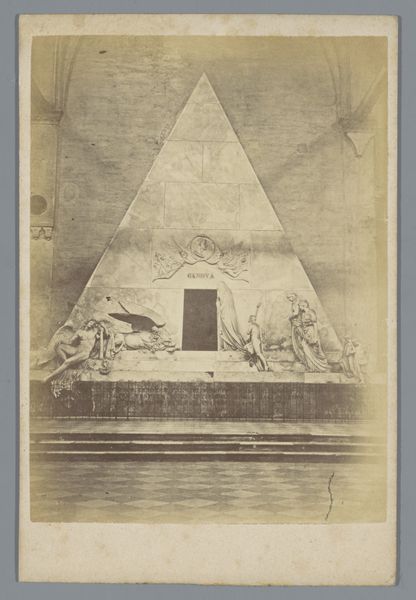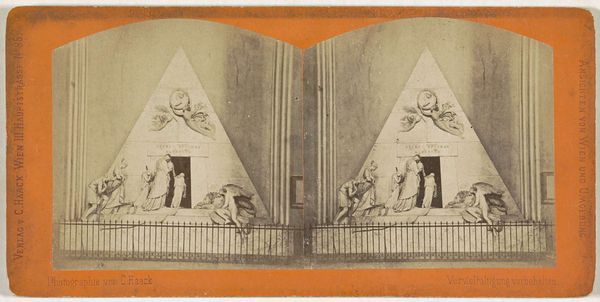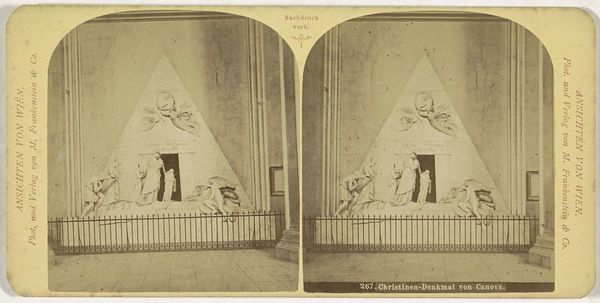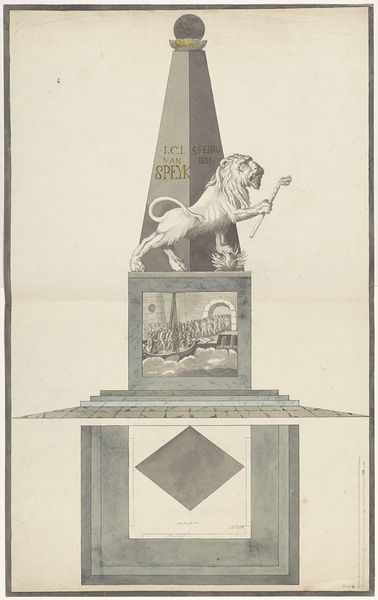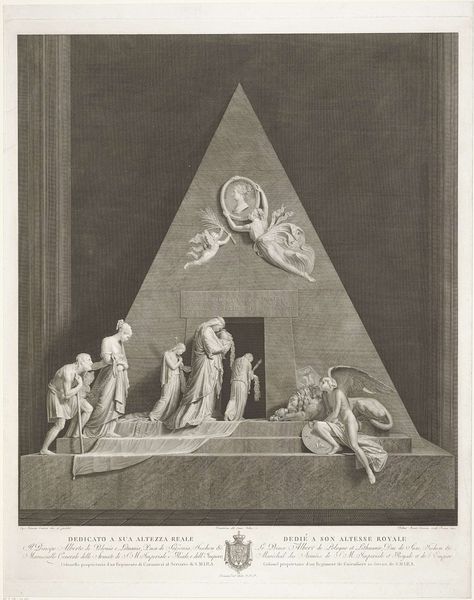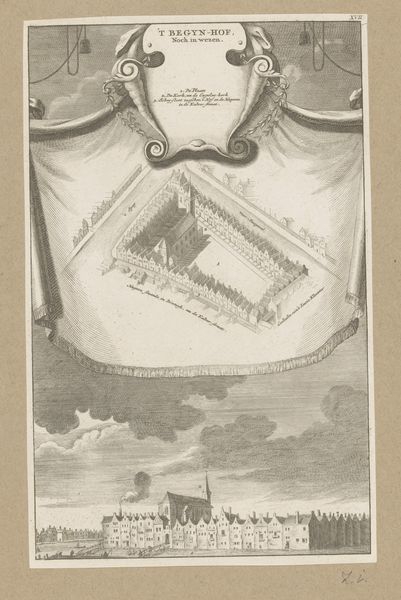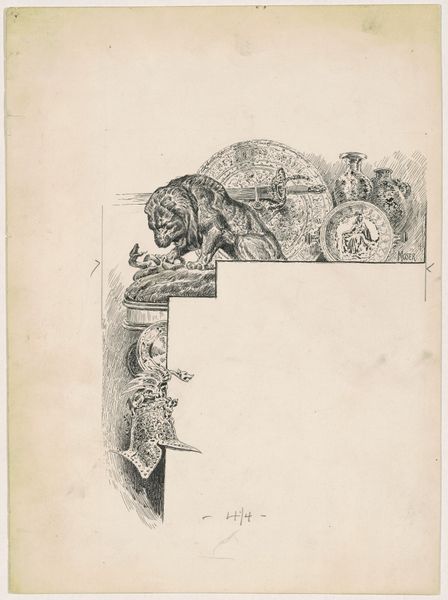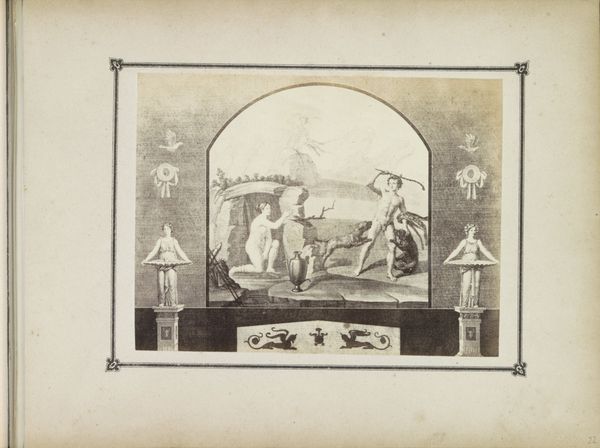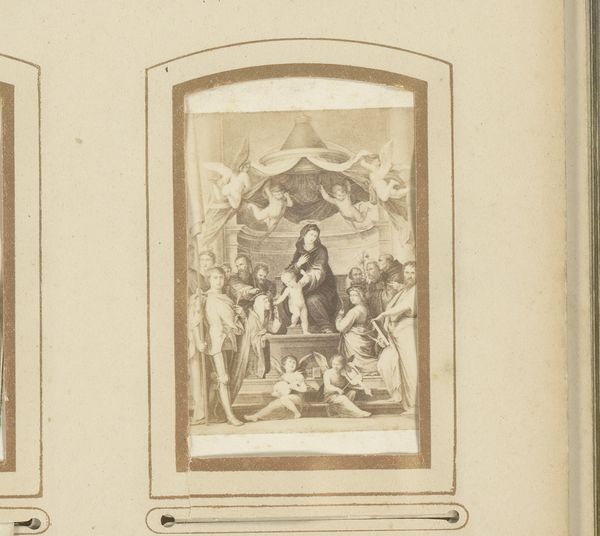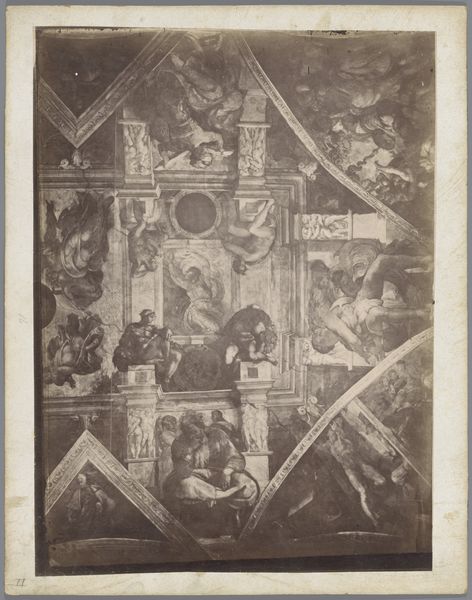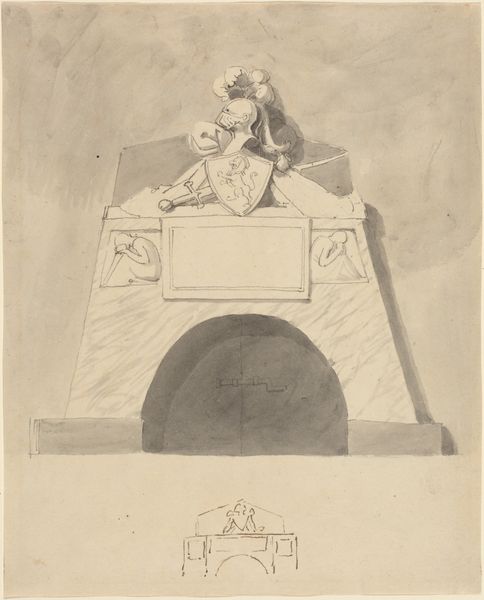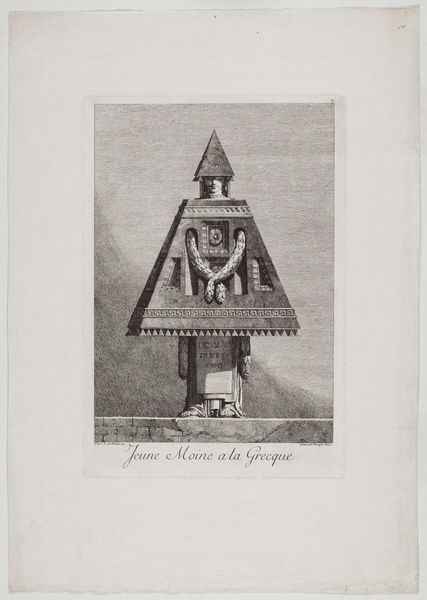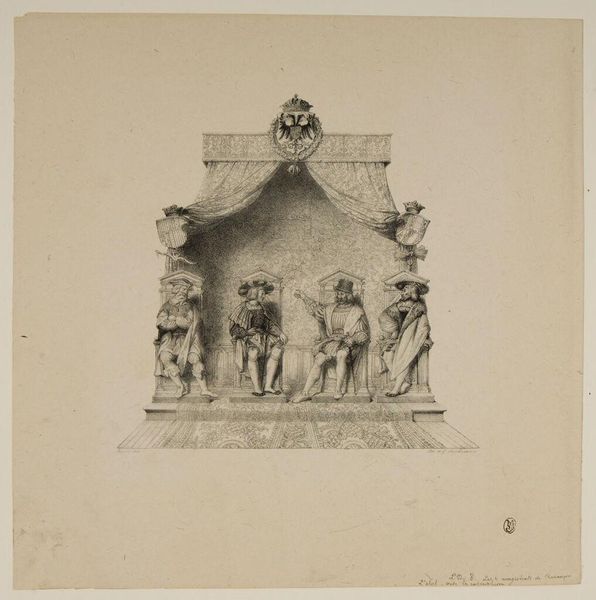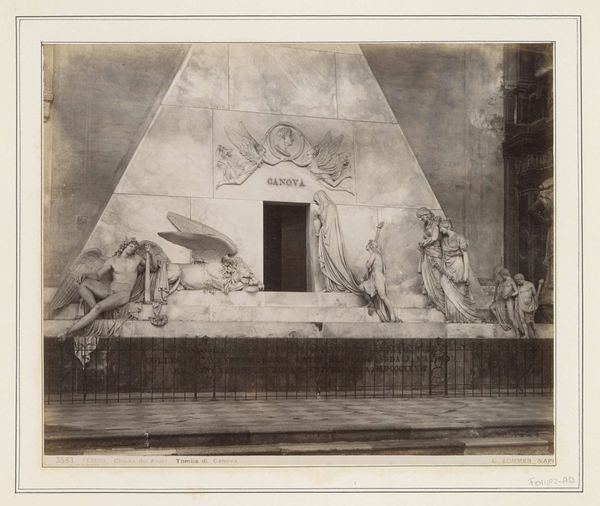
Grafmonument van Maria Christina van Oostenrijk in de Augustinerkirche, Wenen 1868 - 1880
0:00
0:00
mfrankensteinco
Rijksmuseum
Dimensions: height 106 mm, width 67 mm
Copyright: Rijks Museum: Open Domain
This photograph by M. Frankenstein & Co. captures the tomb of Maria Christina of Austria, revealing potent symbols of mortality and memory. The pyramidal structure immediately strikes us, echoing ancient Egyptian funerary architecture, a form associated with eternity and the afterlife. Above the doorway, we see a relief of a winged figure carrying a medallion with the profile of the deceased. This winged figure is reminiscent of classical depictions of Psyche or a soul, a motif that has traversed millennia, from ancient Greek grave markers to Renaissance allegories. The procession of figures approaching the tomb, some bearing urns, evokes the ritualistic mourning scenes found in Roman sarcophagi. Consider the cyclical nature of these symbols: the pyramid, a form intended to defy time; the winged soul, a figure bridging the earthly and divine realms; the mourning procession, a human expression of grief. They all tap into our collective consciousness, speaking to the enduring human preoccupation with death and remembrance. The emotional power of this image lies in its appeal to these primal, universal themes, engaging viewers on a subconscious level. These images reappear throughout history, evolving yet retaining their core emotional resonance, illustrating the non-linear, cyclical progression of symbols as they resurface and take on new meanings across different eras.
Comments
No comments
Be the first to comment and join the conversation on the ultimate creative platform.
